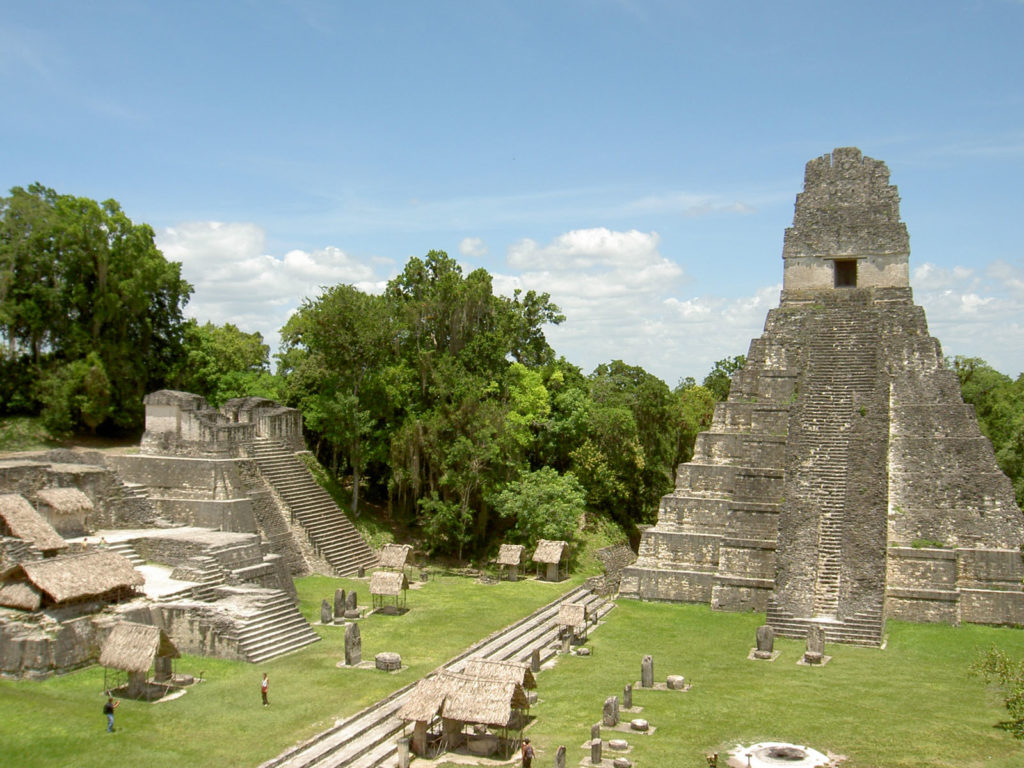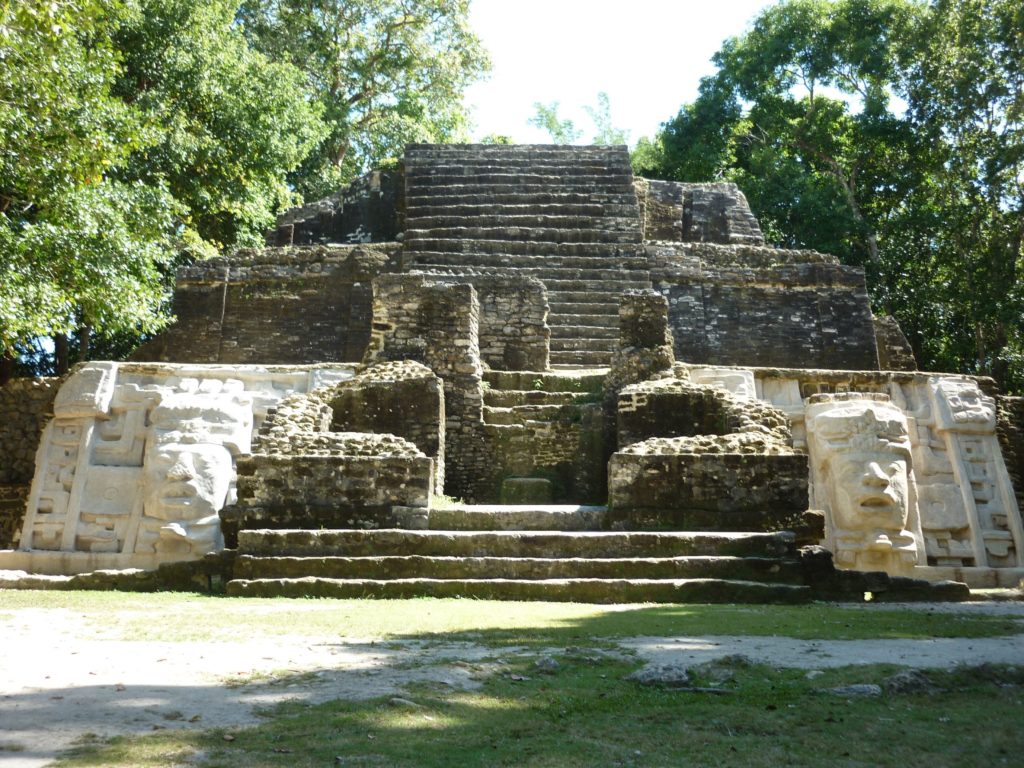The Maya Empire, which rose to its peak around 600 A.D., centered its civilization in what is present-day Guatemala and Belize. The Mayans caused quite a stir when its calendar seemed to end in December of 2012, which many people believed to signify the end of the world. In addition, this great civilization has puzzled those who stumble across its abandoned cities for centuries. Travelers venture out to these Mayan ruins to marvel at the precision and durability of architecture that’s lasted hundreds of years.
Project Expedition offers many different tours that allow you to visit these majestic ruins - we’ve compiled a list of the most popular cities to maximize your travel experience. Xunantunich

SourceLocated in the Cayo district of western Belize, Xunantunich sits atop a ridge overlooking the Mopan River. This site is popular for travelers because of its impressive architecture — the core of the city is home to six plazas surrounded by more than 26 temples and palaces. One of these temples, "El Castillo," has a pyramid-like shape and is the second tallest structure in Belize, standing at 130 ft. It features intricately carved stucco friezes on its walls; there are two temples, with the lower temple showcasing different carved elements representing astronomical symbols, such as the sun god, moon, and Venus.
Translating to "Stone Woman" from the Mayan language, Xunantunich is rumored to be haunted by the ghost of a woman dressed in all white with fiery red eyes. She appears in front of El Castillo, floats up the stairs, and disappears into the wall. Many have tried to follow, but to no avail.
These Mayan ruins can be explored through many different mediums —
kayak through the Mopan River before embarking on your exploration of the city, or
horseback ride around the ruins for a more adventurous experience.
Caracol

SourceCaracol was once an important political hub, covering an area much larger than what is now Belize City. The population of this ancient city also supported twice the population of the modern metropolitan city.
Caracol is the modern-day name for these ruins, translating to "snail," which refers to the spiraling roads leading to the city. However, there are an abundance of actual snails littered around the site as well. Caana, meaning "Sky Palace," is the largest building at Caracol and, at 140 ft, remains one of the tallest man-made buildings in Belize. Besides this impressive building, Caracol also contains 53 carved stone monuments, all of which can be explored for an enlightening experience about the great Maya Empire.
To explore these Mayan ruins, try a
guided tour around the site for the ultimate archaeological experience. After a full day of discovery, cool off in the nearby
Rio On Pools, one of several beautiful waterfalls in Belize.
Altun Ha

SourceAltun Ha was a wealthy Mayan city that still boasts two plazas and 13 structures, including the Temple of the Masonry Altars, where many of the religious ceremonies were held. Today, a drawing of this temple is the logo for Belize's leading brand of beer, "Belikin." Stones from these ruins were used to rebuild the agricultural village called Rockstone Pond, which is appropriate since Altun Ha means "Rockstone Water."
In the larger of the two plazas, Plaza A, tombs were discovered that held bodies believed to be high priests of Altun Ha. Many priceless artifacts were excavated, including a 15 cm jade head of the Maya sun god. This suggests that the people of Altun Ha lived luxurious lives, especially with the discovery of jade necklaces, shells, pearls, beads, and ceramic bowls and jars.
Despite being one of the most visited sites in Belize, these ruins aren't the easiest get to — an experienced guide is often strongly recommended, but
many tours provide guides to help you on your adventure. Not even the humid weather and rough terrain are not enough to keep people from exploring these majestic Mayan ruins.
Tikal

SourceArguably the most important Mayan ruins in existence, Tikal sits in the middle of a rainforest in Guatemala. It was the capital of a conquest state that rose to become one of the most influential kingdoms in the empire. A great metropolis of economic, political, and military power, there is evidence that this great city was conquered by Teotihuacan, which led to the city's eventual abandonment. The site is the major attraction of the Tikal National Park, and in 1979, was
declared a UNESCO World Heritage Site.
The limestone-stepped Tikal Temple I is one of the major structures on the site and rises over 154 ft. It's also known as the Temple of the Great Jaguar for its arch representing a king sitting upon a jaguar throne. Still not impressed? Tikal Temple II, III, IV, and V all boast architectural prowess and validate the importance of these ruins.
You can just take a day trip to visit these Mayan ruins or use
multiple days to fully immerse yourself in Mayan culture.
Cahal Pech

SourceOnce the palatial home to a wealthy and powerful family, the ruins of Cahal Pech are strategically located to overlook both the Macal and Mopan Rivers in Belize. In total, the site contains an impressive 34 structures, with the highest temple reaching almost 82 ft.
Inhabited since about 1200 BCE, Cahal Pech, or "Place of the Ticks," is one of the oldest recognizable Mayan sites in Belize. It earned its nickname when the site was surrounded by tick-infested cattle grazing on the pastures. Many people overlook Cahal Pech, choosing Xunantunich or Caracol instead. However, this once-great city still houses fantastic structures and is an easy walk from town. For those more adventurous, these ruins can still be explore through
river kayaking or
horseback riding.
The Continuing Legacy of Mayan Ruins

SourceAlthough once a massive and thriving empire, the Maya civilization eventually died out, leaving behind magnificent cities. The vastness of these structures continue to amaze travelers worldwide, with so much left to be discovered about them. Click
here to see all the Mayan ruin tours from Project Expedition. Happy travels!
Sources:







